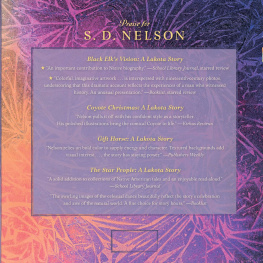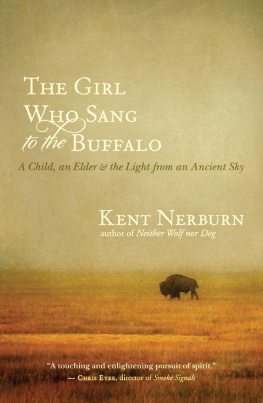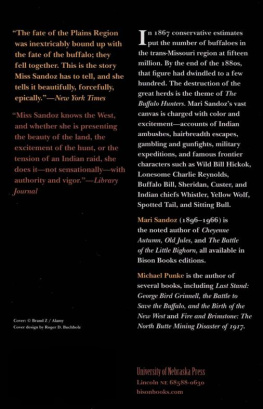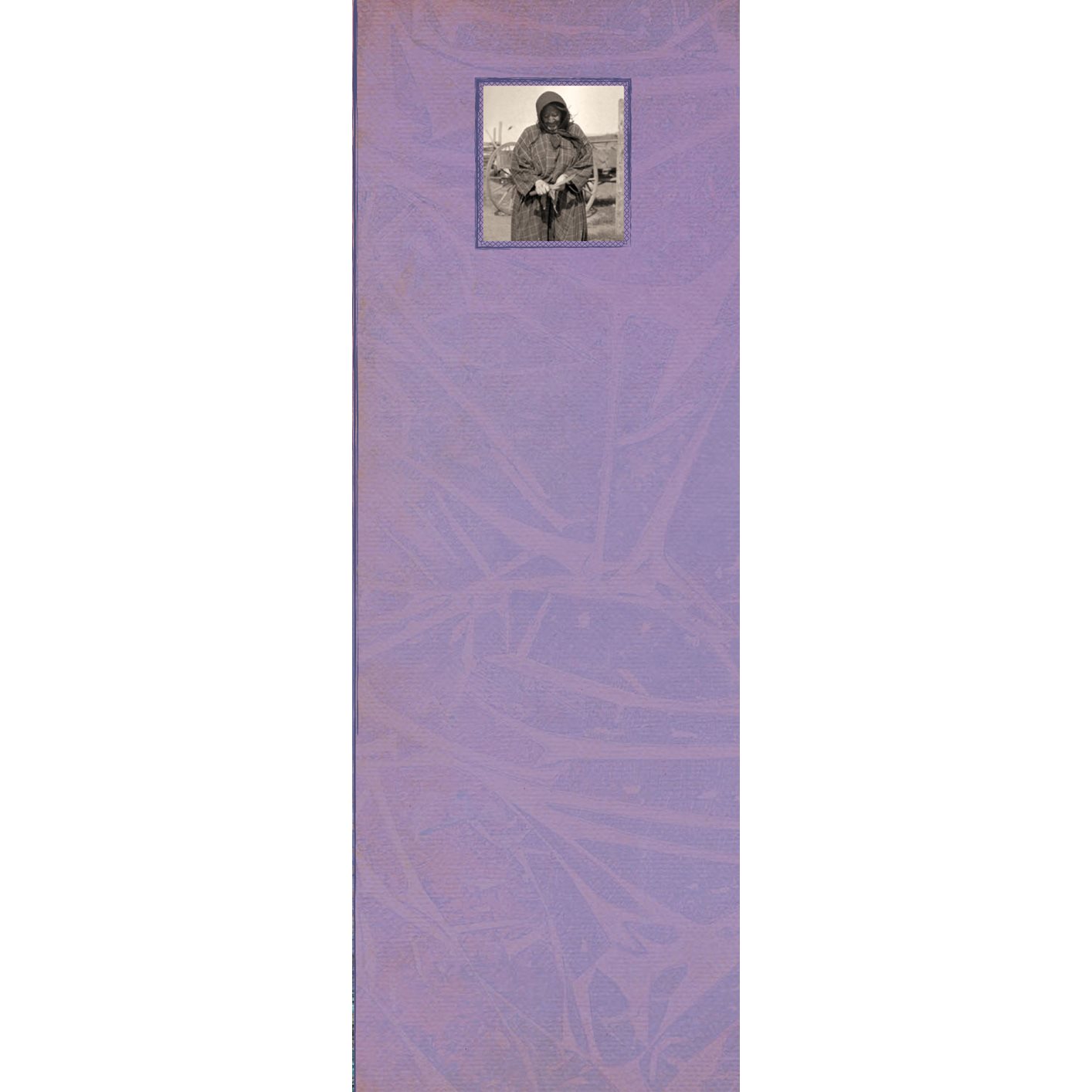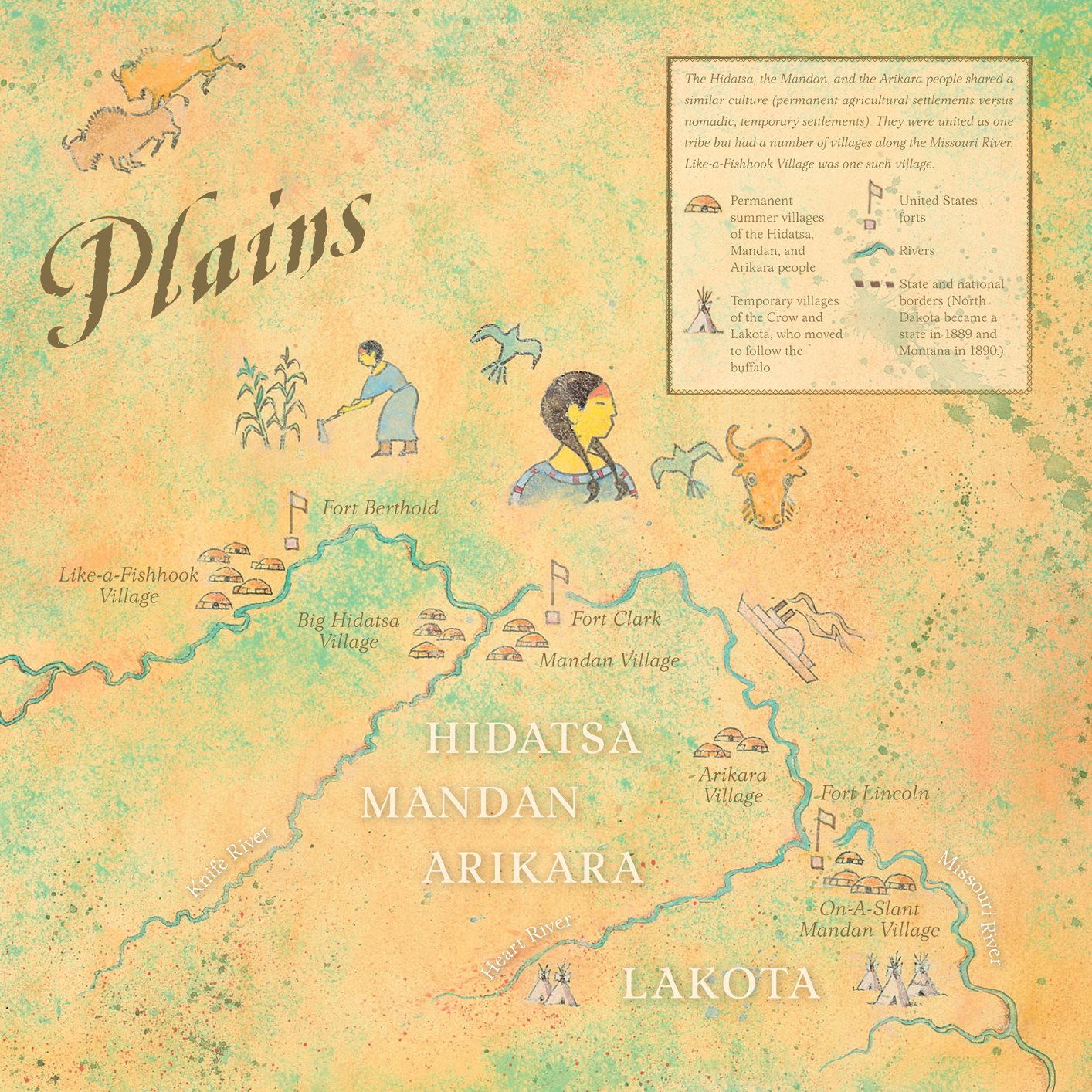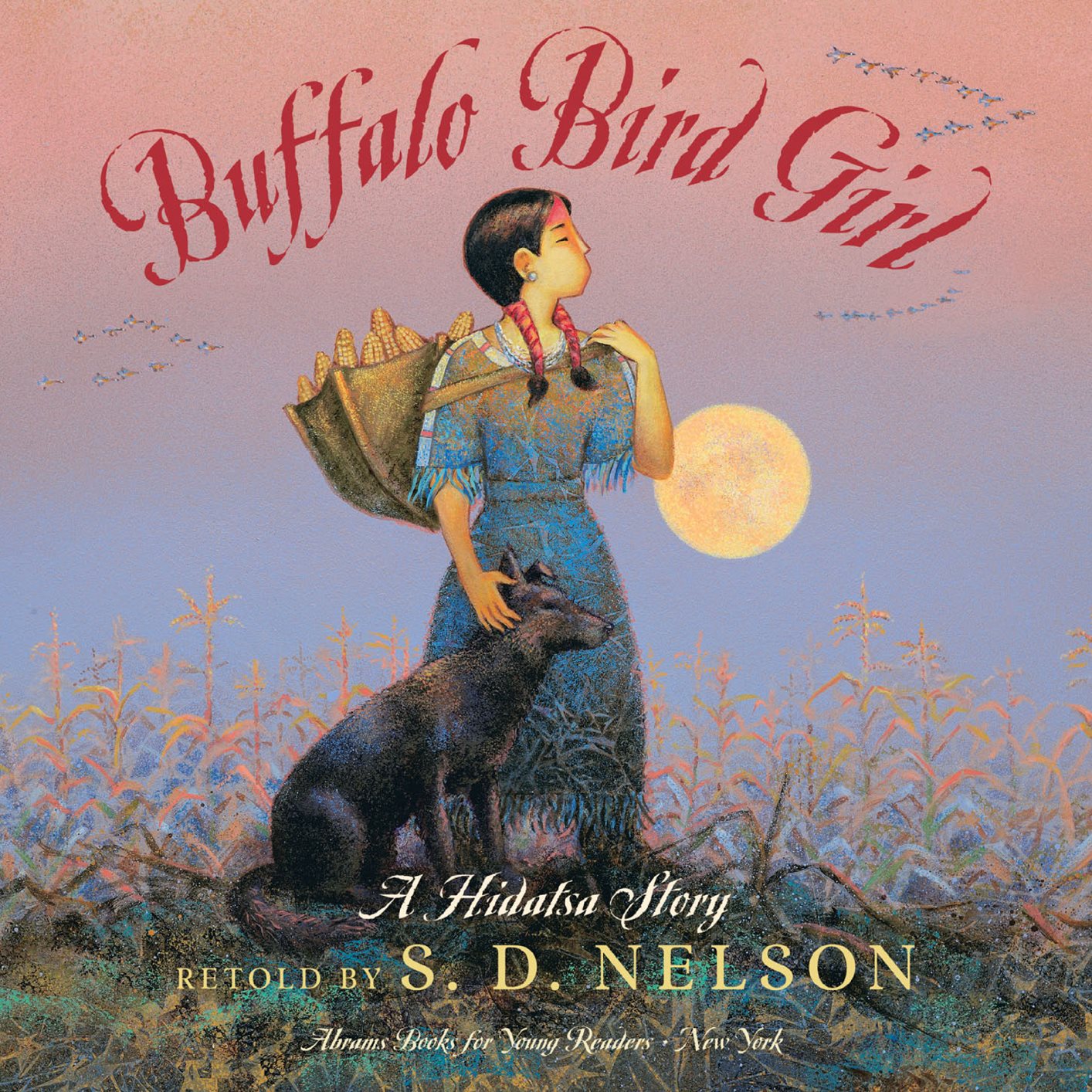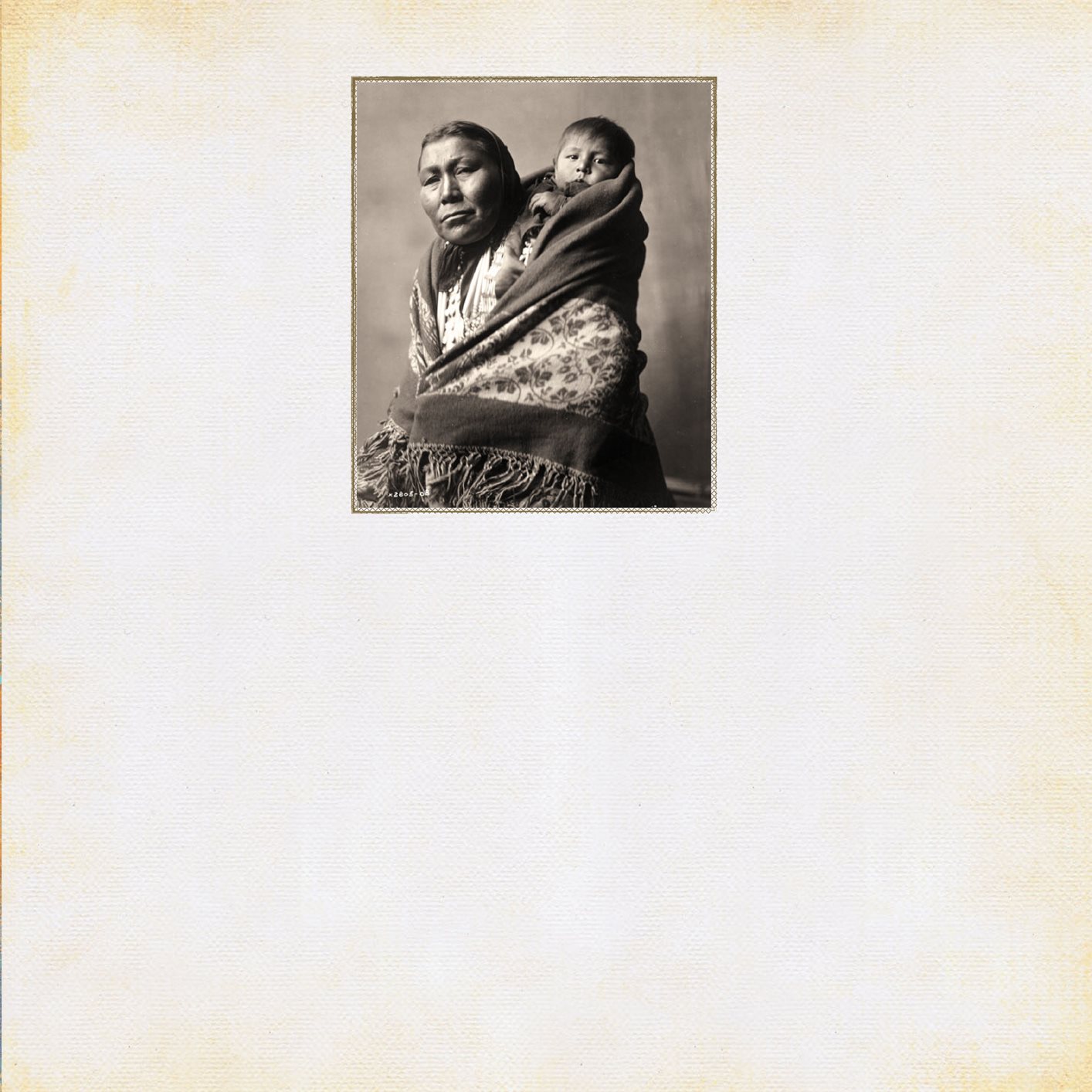
A Hidatsa mother and child
photographed around 1908.
Buffalo Bird Girl would have
been carried by her mother and
aunts in a similar way.
M y name is Buffalo Bird Woman, Waheenee , and my people are known as the Hidatsa. When I was young, they called me Buffalo Bird Girlafter the little brown bird that lives on the prairies of the Great Plains. This name has brought me for- tune, for buffalo have a strong heart and the birds of the air have a good spirit.
In my life I have seen beautiful things and I have lived through hard times. When I was six years old, a terrible sickness called smallpox set upon my people with a fury. The cruel disease first appeared on the Great Plains many years before my birth. It arrived with the coming of the white men. They did not bring the sickness on purpose, but Indians could not fight off this diseasethey had no immunity to the dreaded evil spirit.
Smallpox passed some by, but, sadly, it took the lives of many Hidatsa people, includ- ing my mother, my brother, and one of my aunts. My grandmother and two aunts sur- vived. They raised me with the same love and kindness as my real mother.
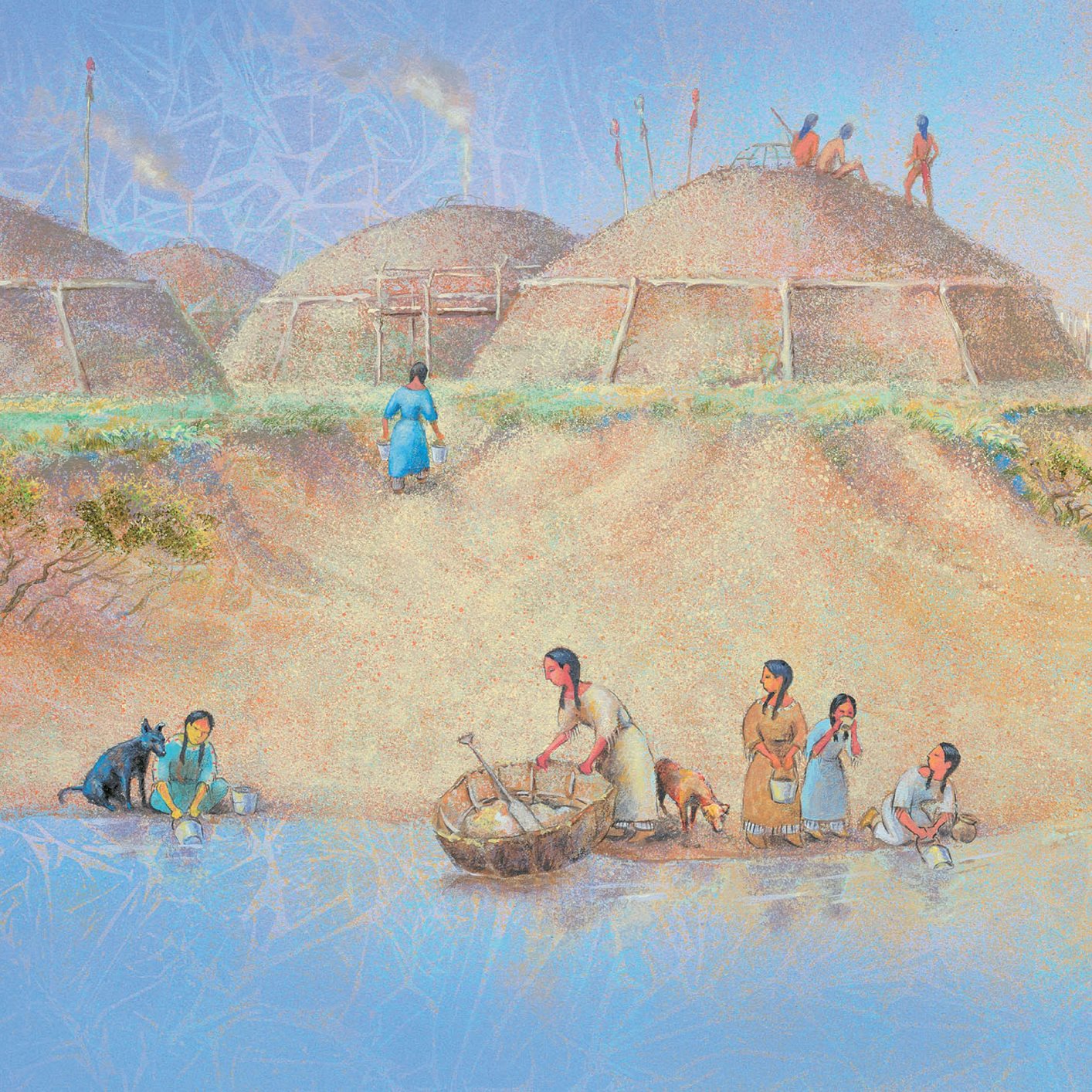
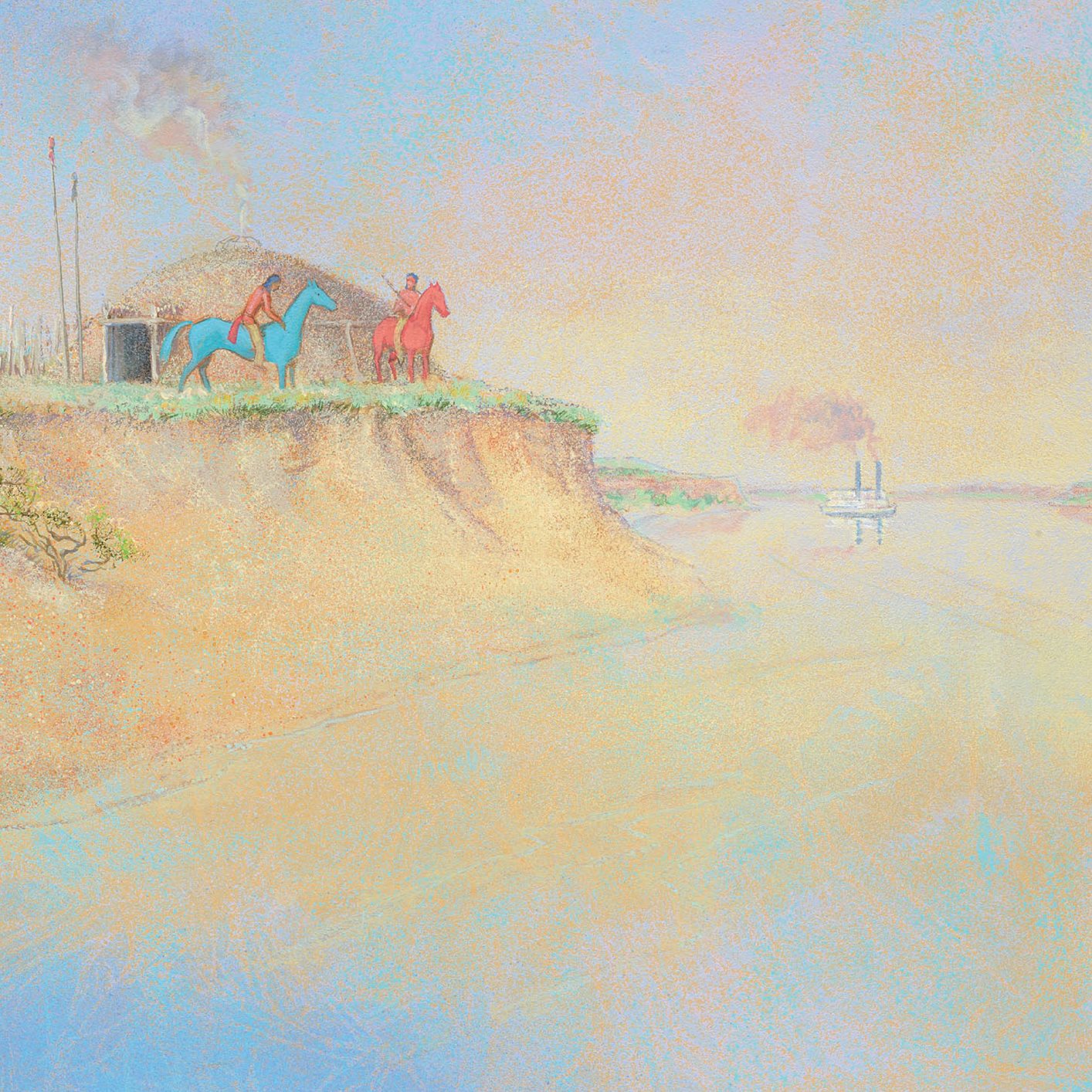
We lived in a village of earth-mound lodges on the high bluffs of the Missouri River. We called it Like-a-Fishhook Village, for it was built upon a sharp bend. One side of our settlement was protected by the mighty river. The other side faced the vast, open prairie and was fenced off with stout posts: a stockade for protection from enemy tribes. The aggressive Lakota Indians, in particular, were constantly trying to steal our horses, our supplies of corn, and other belongings.
Our village was the home of two different Indian tribes: the Hidatsa and the Mandan. We had formed an alliance in order to increase our strength in numbers so we would be less vulnerable to attack. Like-a-Fishhook Village was the center of much activity, with people constantly coming and going.
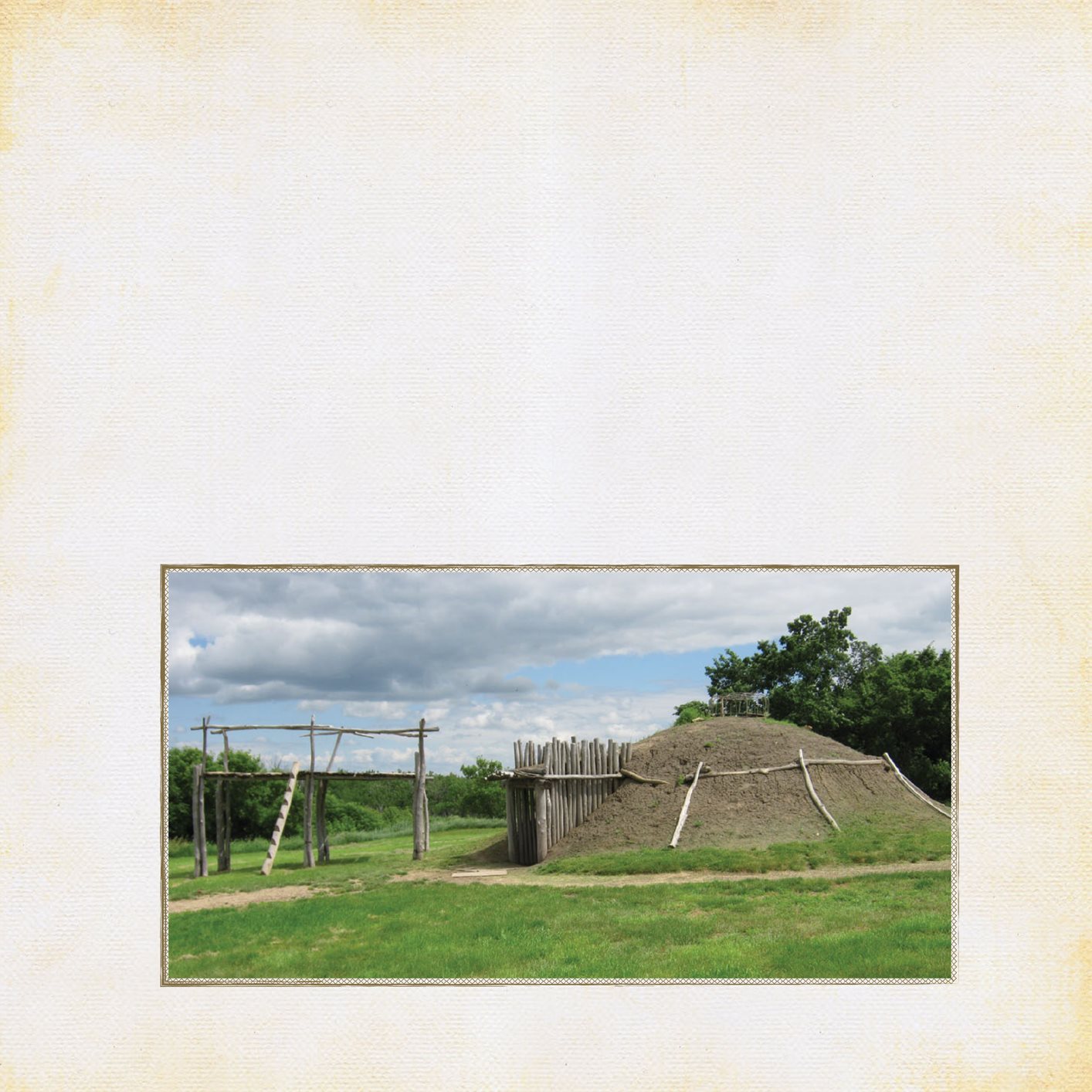
It was cool inside, never hot and stuffy.
My familys earth-mound lodge was large, measuring more than forty feet in diam- eter. It needed to be, for it was home to my father, grandmother, brothers and sisters, cousins, and uncles and auntstwelve people in all. Inside, four enormous cottonwood posts stood like trees. They supported timber crossbeams that carried the great weight of packed earth. There was a fire pit in the center, with a smoke hole in the roof above.
In the shadows beyond the four posts were more columns. They held the log rafters and the leaning walls. Various household items and baskets of dried corn and squash hung from poles set across the rafters. Bed frames ringed the interior. Each served as a bed as well as a place to sit. The bedposts were draped with old tipi coverings for privacy; this canopy also kept out drafts. At night, everyone slept on buffalo robes.

OPPOSITE: A reconstruction of an
earth-mound lodge at On-A-Slant Indian
Village, Fort Abraham Lincoln State Park,
Mandan, North Dakota. Outside the lodge
is a drying stage, accessed by a ladder cut
from a single tree.
ABOVE AND LEFT: Inside the
reconstructed lodge, massive tree posts hold
up the timber crossbeams that in turn carry
the great weight of the earth that covers the
lodge. The smoke hole in the roof allows
light to enter and hearth smoke to escape.

A woman pounds corn into meal in a corn mortar in the manner Buffalo Bird Girl would have learned. Photographed in 1914.
For three seasons of the year, this is where we lived, and I considered it my permanent home. Here I learned many of the duties expected of a Hidatsa woman.
Work began early every day. I remember awaking to the comforting sound of a crack- ling morning fire. My grandmother and aunts would already be awake, preparing break- fast. I learned by watching and then by doing. A favorite breakfast for us children was hot corn porridge. To make it, Grandmother would pound hard kernels of corn into a fine meal in a wooden mortar. She boiled dried squash and beans in a clay pot filled with river water. Then she added the cornmeal mixed with roasted buffalo fat to the pot of vegetables. It tasted delicious! We women and girls always ate in a separate area from the men and boys.

